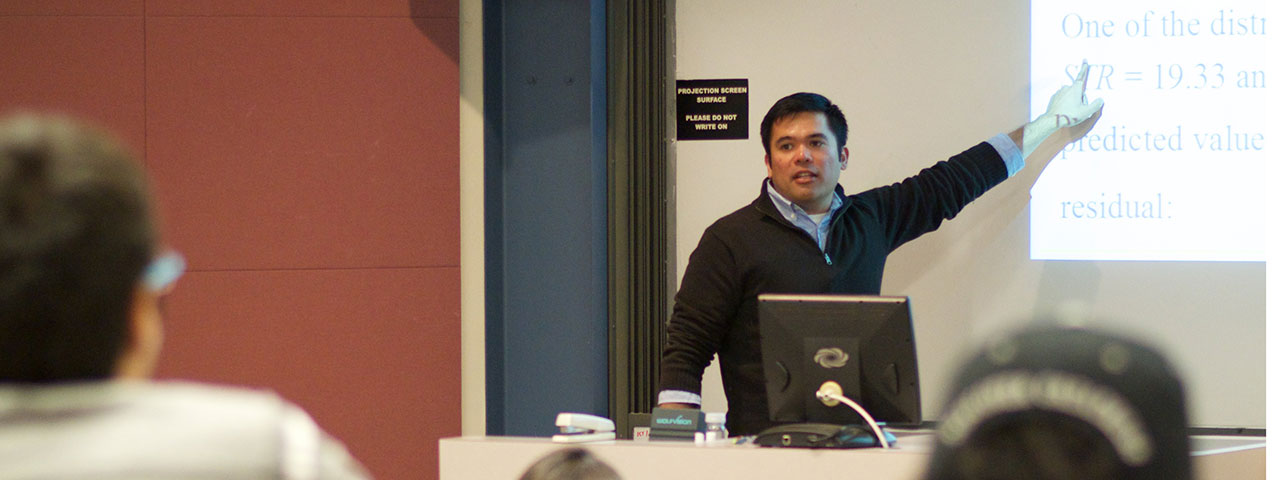Department of Economics
Graduate Studies

Economics, M.A.
Built around the department's research strengths in labor economics, public economics, international trade and urban/regional economics, the M.A. program trains students in the rigorous application of theory to policy-oriented settings.
Economics, Ph.D.
A research-oriented degree, the Ph.D. program is designed for those looking to work on applied economics in academia, government agencies, independent research organizations or research-oriented businesses. Many students complete the program having authored publications in peer-reviewed journals.
Explore Your Research Interests
With a low graduate student-to-faculty ratio and a small entering Ph.D. class, students will be immersed in a research culture of close collaboration.

Graduate students conduct meaningful research in Maxwell's 15 research centers, including:
- Aging Studies Institute
- Autonomous Systems Policy Institute
- Campbell Public Affairs Institute
- Center for Aging and Policy Research
- Center for Environmental Policy and Administration
- Center for Policy Design and Governance
- Center for Policy Research
- Center for Qualitative and Multi-Method Inquiry
- Institute for Democracy, Journalism and Citizenship
- Institute for the Study of the Judiciary, Politics and the Media
- Lerner Center for Public Health Promotion and Population Health
- Maxwell X Lab
- Moynihan Institute of Global Affairs
- PARCC (Conflict and Collaboration)
- Institute for Security Policy and Law
Interested in hiring Ph.D. or Master's candidates?

I am Maxwell.
I strive to genuinely support and mentor graduate students in all domains of their professional formation and career regardless of whether the students are working in my area of expertise, my department, or even my university.”
Professor of Economics Alfonso Flores-Lagunes
Recipient of the 2021 Excellence in Graduate Education Faculty Award; President-Elect of the American Society of Hispanic Economists
Visit his faculty profile for more on his teaching and research